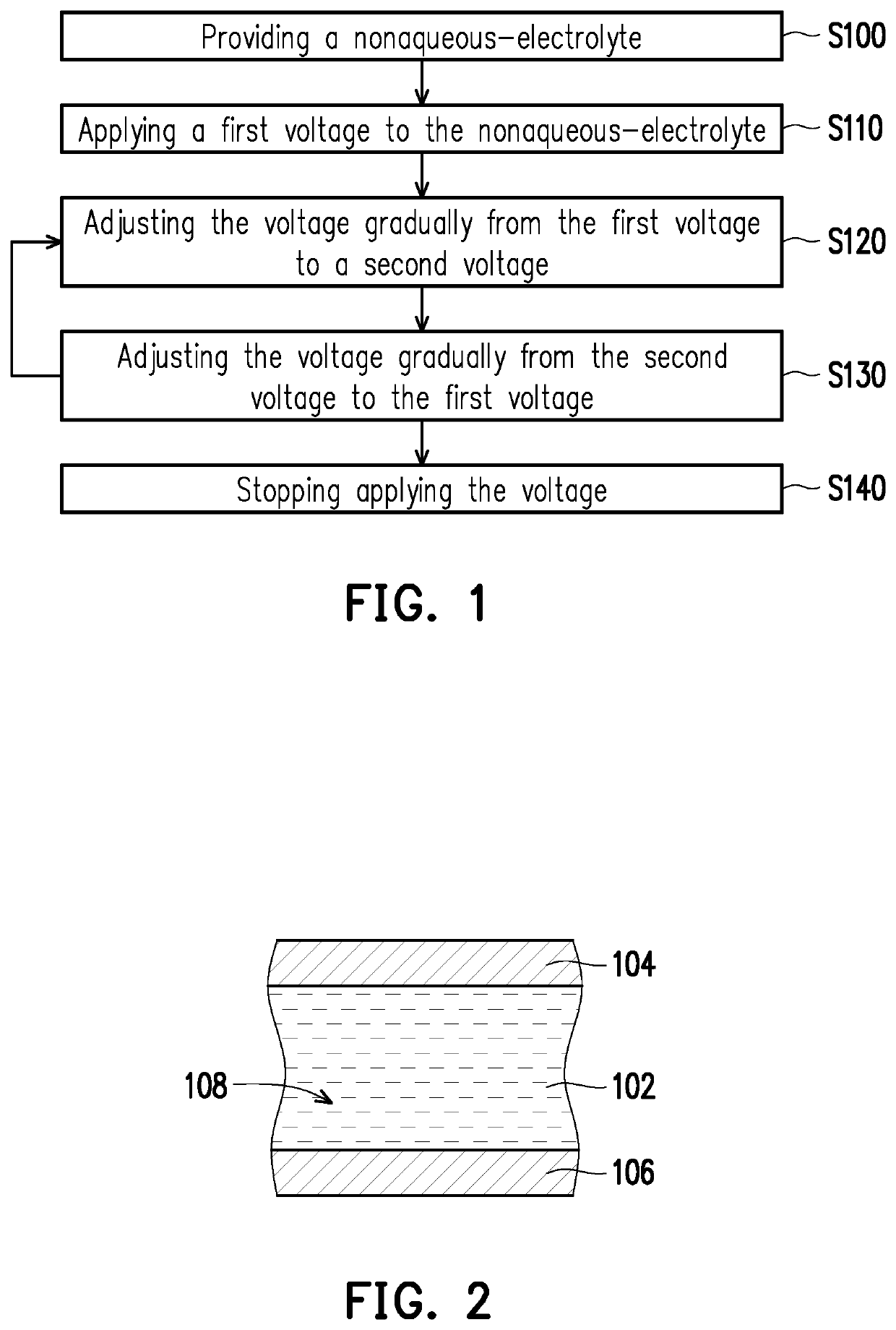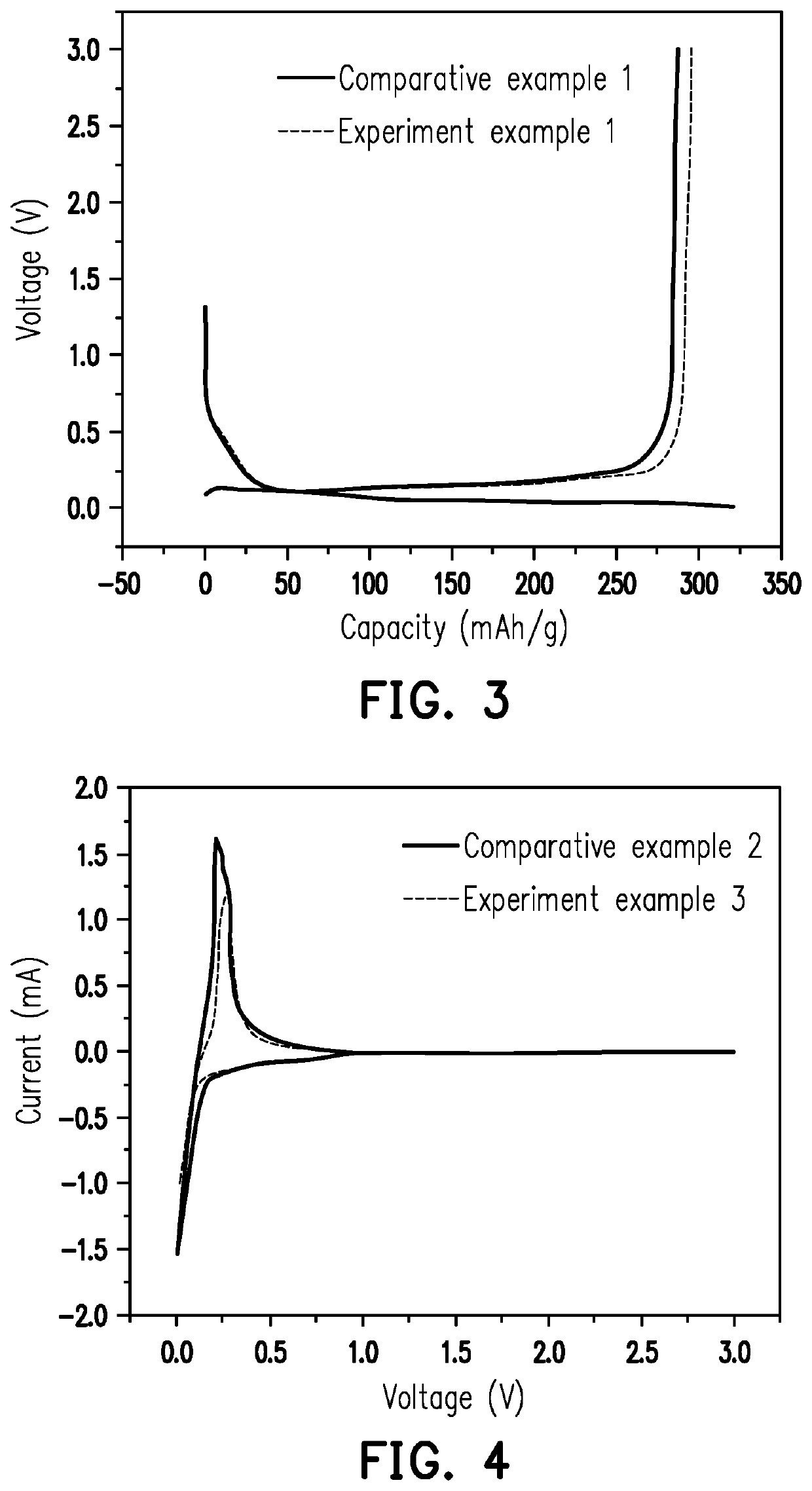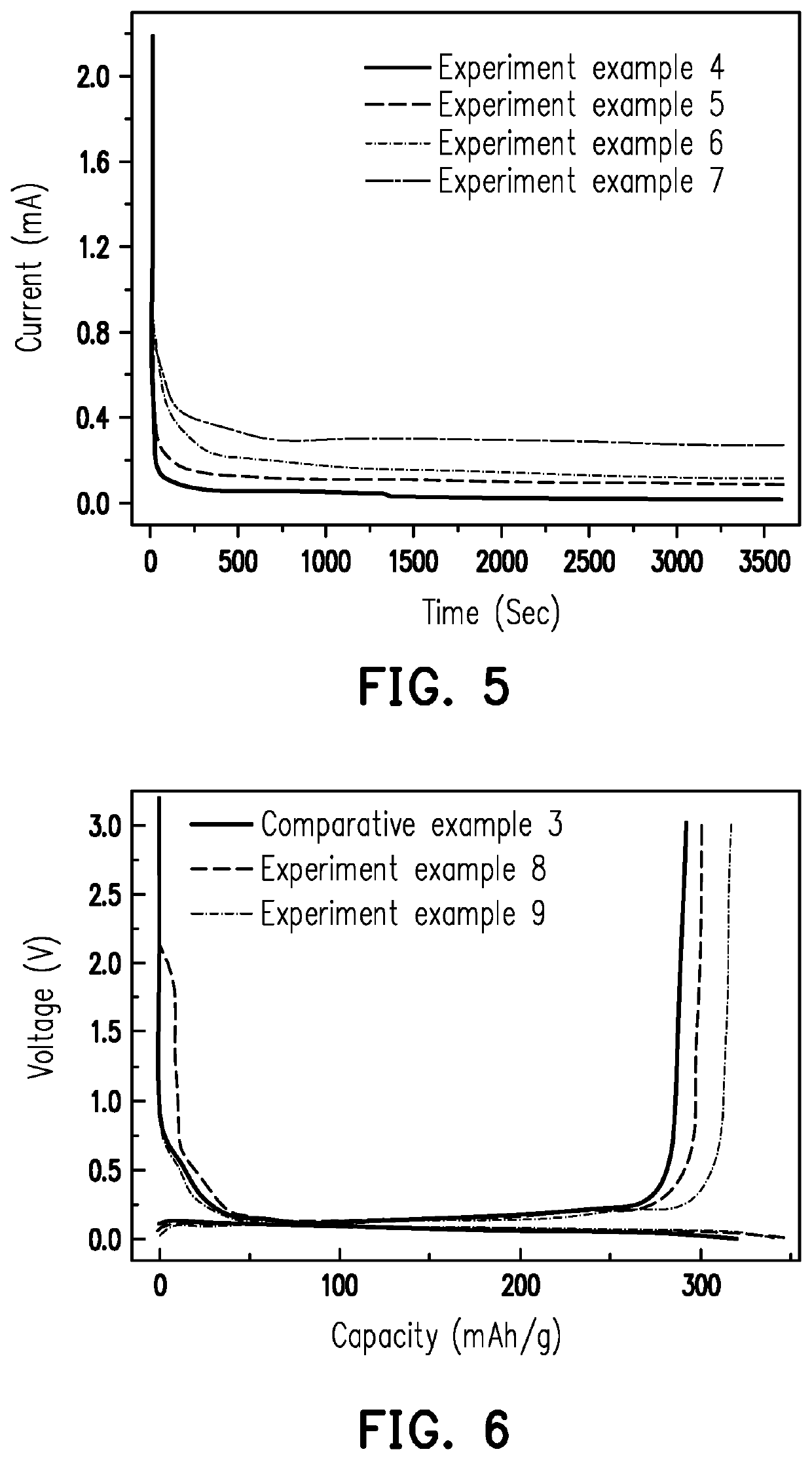Treating method of non-aqueous electrolyte and method of fabricating battery
a non-aqueous electrolyte and treatment method technology, applied in the direction of cell components, electrochemical generators, cell component details, etc., can solve the problems of reducing the overall electric capacity of the li battery, affecting the efficiency of the battery,
- Summary
- Abstract
- Description
- Claims
- Application Information
AI Technical Summary
Benefits of technology
Problems solved by technology
Method used
Image
Examples
experimental example 1
[0039]First, LiPF6 was dissolved in an EC / DEC organic solvent (at a volume ratio of EC:DEC=1:1), and thereby, a nonaqueous-electrolyte in which a concentration of LiPF6 was 1 M was prepared. Thereafter, a voltage process was repeatedly performed on the nonaqueous-electrolyte 80 times. One time of the voltage process was defined as first applying a voltage of 0.0 V to the nonaqueous-electrolyte, gradually increasing the voltage to 1.4 V at a speed rate of 10 mV / s and then, gradually reducing the voltage back to 0.0 V.
experimental example 2
[0040]In Experimental example 2, a nonaqueous-electrolyte was prepared by the same steps of Experimental example 1. However, the difference lies in that in Experimental example 2, the voltage process was repeatedly performed on the nonaqueous-electrolyte 50 times.
experimental example 3
[0044]A voltage scanning operation was performed on a Li / MCMB (meso carbon micro beads) battery containing the nonaqueous-electrolyte of Experimental example 2 at a scanning rate of 0.1 mV / s, a voltage range scanned thereby was from 0.01V to 3V, and a current was generated in the occurrence of an oxidation or reduction reaction during a voltage-level change period, thereby obtaining a current-to-voltage level relation.
PUM
| Property | Measurement | Unit |
|---|---|---|
| voltage | aaaaa | aaaaa |
| voltage | aaaaa | aaaaa |
| voltage | aaaaa | aaaaa |
Abstract
Description
Claims
Application Information
 Login to View More
Login to View More - R&D
- Intellectual Property
- Life Sciences
- Materials
- Tech Scout
- Unparalleled Data Quality
- Higher Quality Content
- 60% Fewer Hallucinations
Browse by: Latest US Patents, China's latest patents, Technical Efficacy Thesaurus, Application Domain, Technology Topic, Popular Technical Reports.
© 2025 PatSnap. All rights reserved.Legal|Privacy policy|Modern Slavery Act Transparency Statement|Sitemap|About US| Contact US: help@patsnap.com



